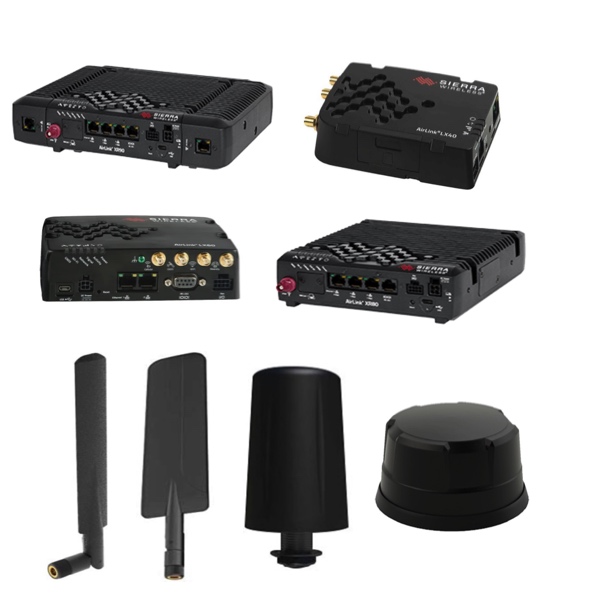Cellular Communication

RSP Supply offers a complete selection of cellular communication and networking devices, including antennas, gateways, routers, accessories, software, and support tools - all engineered to deliver reliable, high-speed data connectivity across industrial, enterprise, and mobile environments.
Modern cellular networks are the backbone of wireless communication for industries that depend on consistent, secure data transmission. Beyond phones and entertainment, these networks power essential systems in public safety, transportation, utilities, and industrial automation. Cellular solutions enable real-time monitoring, remote control, and machine-to-machine (M2M) communication for critical applications. Vehicle-based cellular networking, in particular, enhances productivity and safety by maintaining constant connections to fleet management systems, control centers, and the cloud. 4G LTE and 5G-enabled vehicle area network (VAN) routers deliver robust, secure data links for trains, buses, utility vehicles, delivery fleets, and emergency service units. Built to military and industrial standards, these devices perform reliably under harsh conditions; withstanding vibration, temperature swings, moisture, and voltage variations.
FAQs
Q: What is cellular communication used for in industrial environments?
Cellular communication connects remote industrial assets and control systems to monitoring networks, enabling data transmission, telemetry, and automation in locations without wired infrastructure.
Q: What types of cellular networking devices are available?
RSP Supply offers routers, gateways, antennas, and accessories designed for industrial and vehicular use, supporting both 4G LTE and 5G technologies for reliable, high-speed communication.
Q: Can cellular networks be used for vehicle and fleet applications?
Yes. Vehicle area network routers provide secure, high-performance connectivity for fleets such as buses, utility vehicles, and emergency response units, allowing for GPS tracking, diagnostics, and cloud-based communication.
Q: How do cellular gateways improve network performance?
Cellular gateways manage data routing, failover, and security, ensuring seamless communication between field devices and enterprise systems; even across multiple carrier networks.
Q: Does RSP Supply sell cellular devices built for rugged environments?
Yes. Industrial and vehicle-rated devices are military and industry certified to resist extreme temperatures, vibration, and moisture, ensuring long-term durability and reliability in the field.
Why Buy Cellular Communication from RSP Supply
RSP Supply delivers complete cellular networking solutions with expert support, quick delivery, and competitive pricing. Whether you’re connecting remote assets, fleets, or automation systems, our industrial-grade equipment ensures dependable communication and long-term system performance.

